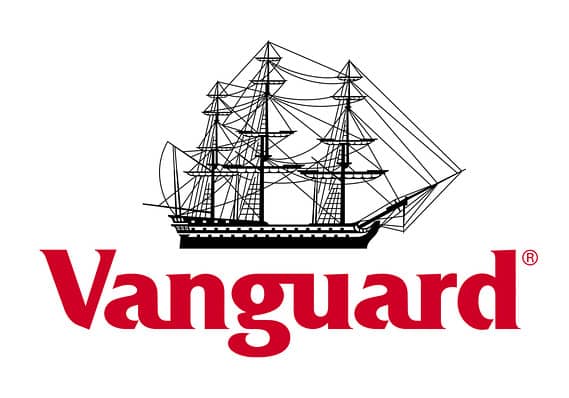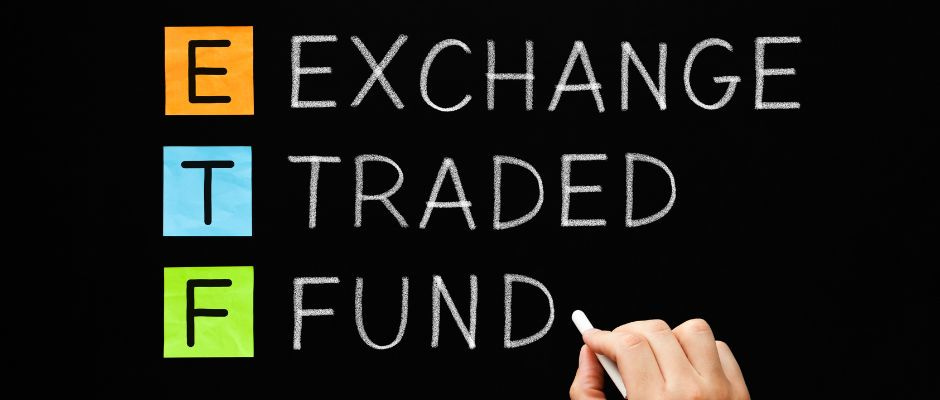Do you invest in ETFs or Exchange Traded Funds? For most investors, they are the easiest way to get exposure to a large portion of the stock market. They can be cost-effective if they have a low expense ratio, and can even pay you consistent dividends. Even Warren Buffett says that for a majority of people, investing in low-cost index funds is the best way to go. So in this VDY ETF review article, we’ll ask the question: is VDY the best Canadian Dividend ETF to buy?
The Vanguard FTSE Canadian High Dividend Yield Index ETF combines reasonable capital appreciation with a high monthly dividend payout. This ETF is an excellent addition to any diversified portfolio, especially for those investors who are seeking a steady stream of income.
Is VDY worth your money? Vanguard is one of the world’s largest ETF providers and has over $8.1 trillion in assets under management. It is definitely one of the most trusted names in the financial world. In this VDY ETF review article, we will discuss some key facts, the top holdings, the fund fees, the recent performance, and if it deserves a spot in your portfolio.

VDY ETF Review: What is VDY ETF?
First things first in this VDY ETF review: what is VDY and why should you care? The VDY ETF was introduced by Vanguard Canada in November 2012. Since then, it has added over $2.53 billion in assets under management and is one of the most popular dividend-focused ETFs on the TSX today.
VDY provides investors with a basket of Canadian stocks that are traded on the TSX and provide high dividend yields. The fund is designed to track the FTSE Canadian High Dividend Yield Index.
This fund is passively managed and has a decent Sharpe Ratio of 0.42. This shows that the risk-adjusted return of VDY is relatively high with a solid historical performance, although this ratio has fallen in recent quarters.
Here are some key facts about the VDY ETF as of June 2024:
| Inception Date | November 2, 2012 |
| Number of Holdings | 56 |
| Management Fee | 0.20% |
| MER (Management Expense Ratio) | 0.22% |
| Assets Under Management | CAD $2.53 billion |
| Distribution Frequency | Monthly |
| Distribution Yield | 4.74% |
| 12-Month Trailing Distribution Yield | 4.61% |
| Currency | Canadian Dollars |
| Ticker Symbol | VDY.TO |
VDY Management Fees and MER
When looking at ETFs, one of the most important factors is how much the fees are. VDY has competitive management fees although they aren’t necessarily the lowest on the market. So what exactly are the management fees and MER for an ETF?
The two are not the same although they are often used interchangeably. The MER includes the management fee, which is why you might see the MER as a higher number. What the MER essentially means is how much the fund manager, in this case, Vanguard, is charging you to own this ETF. For a passively managed index fund like VDY, there is little management needed.
An MER of 0.22% means that for every $10,000 you have invested in VFV, you pay an annual fee of $22.00. Not too shabby at all! This is also an excellent example of why we say low-cost ETFs make a huge difference over the long run.
| VDY Management Fee | 0.20% |
| VDY MER (Management Expense Ratio) | 0.22% |
VDY Holdings Breakdown
When discussing the holdings of an ETF we typically talk about how much the weighted allocation each stock has in the fund. For an ETF that tracks the S&P 500 index, the holdings are a simple discussion. Other ETFs often track sectors or even other regional stock markets.
Most of the names in VDY will be very familiar to Canadian investors. The TSX is full of blue-chip, high-dividend paying stocks so this should come as no surprise. Without further ado, here are the top ten holdings in VDY as of June 2024:
| Ticker Symbol | Stock Name | Weighted Allocation |
| RY.TO | Royal Bank of Canada | 15.15% |
| TD.TO | Toronto Dominion Bank | 9.80% |
| CNQ.TO | Canadian Natural Resources Ltd.. | 8.11% |
| ENB.TO | Enbridge Inc | 7.63% |
| BMO.TO | Bank of Montreal | 6.35% |
| BNS.TO | Bank of Nova Scotia | 5.64% |
| SU.TO | Suncor Energy Inc. | 5.24% |
| MFC.TO | Manulife Financial Corp | 4.67% |
| CM.TO | Canadian Imperial Bank of Commerce | 4.43% |
| TRP.TO | TC Energy Corp | 3.92% |
Here is a comparison of the sector breakdown in the VDY ETF:
| Sector Name | Allocation in VDY ETF |
| Financials | 55.13% |
| Energy | 30.26% |
| Telecommunications | 5.98% |
| Utilities | 5.88% |
| Basic Materials | 1.63% |
| Consumer Discretionary | 0.65% |
| Industrials | 0.23% |
| Real Estate | 0.22% |
| Total | 100.0% |
Most of you will not be surprised by the high allocations to the financial and energy sectors in VDY. The TSX is dominated by bank and oil stocks, many of which yield high dividends to their shareholders. Some investors might be a little uncomfortable with an ETF that allocates so much weight to just two sectors.
The Pros and Cons of Holding VDY
Pros
It’s all about dividends when you invest in VDY. As we mentioned, most of these stocks are blue-chip companies with minimal forward growth. But what they lack in growth they more than make up for with consistent dividend payments.
The MER for VDY could be lower, but it’s not outrageous. For example, Vanguard’s S&P 500 ETF, VFV.TO has a very low MER of just 0.09% which is well lower than the MER for VDY.
For the most part, the stocks that VDY holds are very stable and secure. Canadian banks, telecommunications, and energy stocks make up a bulk of the TSX’s large-cap holdings. These stocks have a long history of steady performance and should give investors confidence in holding VDY.
Cons
Holding an all-stock equity portfolio like VDY can be risky, especially if the market is showing signs of volatility. As we saw over the past couple of years, even the strongest blue-chip stocks can tumble during a bear market or crash.
The sector allocation could be better for VDY. More than 85% of the holdings are either financial or energy stocks.
VDY vs XEI
This is an ETF comparison that is often made by Canadian investors. XEI.TO is the iShares S&P/TSX Composite High Dividend Yield Index ETF from Blackrock. How do the two compare? Here’s a brief breakdown of the XEI ETF.
Both VDY and XEI have identical MERs, so you cannot argue that one is cheaper to own than the other. The dividend yield for XEI is slightly higher at 5.57% compared to VDY’s 4.74%. Both ETFs pay dividends monthly.
XEI might have the upper hand when it comes to its holdings. Compared to VDY’s more than 85% allocation to financial and energy stocks, XEI’s is at about 60%. Instead, XEI has a much higher allocation to Utilities (13.84%) and Communications (10.10%). XEI holds 75 different dividend-paying TSX stocks compared to VDY’s 56 holdings.
VDY vs XDIV
XDIV.TO or the iShares Core MSCI Canadian Quality Dividend Index ETF, is another Blackrock ETF. Like VDY, XDIV pays out monthly dividends and its yield is currently slightly lower than VDY at 4.60%.
One thing that is attractive about XDIV is that it has an MER that is half that of VDY and XEI at just 0.11%. XDIV only holds 19 different stocks which is much lower than VDY’s 56 holdings.
Another unique feature of XDIV is that it has a relatively lower allocation to energy stocks, although it has risen lately to about 28% of the fund’s weight. Instead, XDIV has a 46.80% allocation to financial stocks, a 5.31% allocation to communication stocks, a 12.48% allocation to utility stocks, and a 6.70% allocation to consumer discretionary stocks.
VDY vs ZDV
ZDV.TO is BMO’s version of the Canadian dividend ETF. The BMO Canadian Dividend ETF pays out an annualized distribution yield of 4.26% that pays dividends monthly.
One issue with ZDV is its high MER fees. The current MER sits at 0.39% which is nearly double that of VDY and XEI, and nearly four times that of XDIV.
This ETF has 51 different holdings, but none of them have more than a 5.2% weighted allocation to the fund. Again, financial stocks make up nearly 40% of the fund, while energy stocks come in second with 18.42% of ZDV’s allocation.
VDY ETF Review: Is VDY ETF a Good Investment?

VDY is a great ETF to hold, but it is not without its faults. For younger investors, there might be more attractive growth options available. But for most investors, VDY makes for a great addition to your Canadian diversified portfolio.
This fund stands out for those seeking a steady income stream. That makes VDY a must-own ETF for investors who are nearing retirement and want to hold some dividend-paying assets in their RRSP or TFSA.
Remember, this is never meant to be financial advice. Do your own research and make sure that investing in VDY matches your own risk tolerance, investment horizon, and investing goals. Use this guide as a starting point but never as a reason to blindly buy the VDY ETF!
Stay Savvy!
FAQs
What is the Best Canadian Dividend ETF?
The thing about Canadian dividend ETFs is that most of them hold the same blue-chip dividend stocks. This means that performance and returns will be similar across the board. In our opinion, VDY.TO and XEI.TO have the best balance of monthly distributions, performance, stability, and reasonable fees.
Does VDY Pay Monthly Dividends?
Yes! VDY.TO is a Canadian Dividend ETF that pays out its dividends monthly to shareholders. The current annualized dividend yield for VDY is 4.74%. As of June 2024, the monthly dividend distribution was $0.176 per share.
Are High Dividend ETFs Worth It?
This depends on your investment strategy and goals. High-dividend ETFs are a great and usually stable investment for people who are seeking income flow and low volatility. Canadian dividend ETFs like VDY offer high exposure to Canadian financials and energy stocks which are historically stable. The monthly dividend is also a benefit for those seeking income in retirement.
Which is Better, VDY or XEI?
When it comes to Canadian dividend ETFs, it usually comes down to VDY vs XEI. Both offer monthly dividends and similar returns. XEI has a slightly different portfolio construction with less exposure to banks and energy and a higher allocation to utilities and communications. XEI also holds 75 stocks compared to just 56 for VDY.
